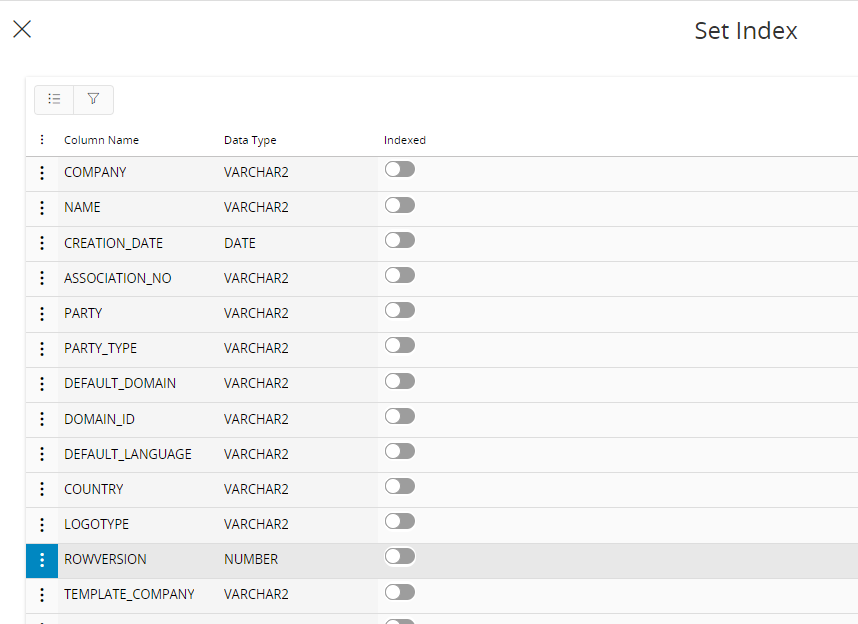Configure Information Access Layer¶
This section describes how to maintain the IAL after installation is completed. Read more about the IAL concept in the section About Information Access Layer (IAL)

Object attributes are maintained in the form IAL Objects page.
Links¶
Fields¶
| Field | Description |
|---|---|
| Object | The name for the IAL Object, and also the name for the view that the end user accesses data through |
| Replication | Use Live Data (Fast Access): Data will be fetched straight from the application database Copy All Data (Fast Access): All data will be replicated, every time the object is updated. This option is only enabled for objects designed to use replication. Copy Only New-data (Fast Access): Note: This option is not supported IFS Cloud 20R1 onwards. |
| Manual Update | When checked, data must be updated manually (i.e. there is no scheduled replication) |
| Replication Schedule | States how the replication is scheduled |
| Update Status | Current status for the object |
| Last Update Started | Last time the replication was started, if any. |
| Last Update Ended | Last time the replication was completed, if any. |
| Next Update Begins | Next time replication will commence. |
Replication scheduling¶
Scheduling is performed by the server process Fnd_Light_Cleanup, which by default executes once every ten minutes. For each IAL-Object that is found to be due for replication, a background job is created which executes the actual replication. This minimizes the amount of time taken by the Fnd_Light_Cleanup process and also enables the possibility of assigning replication-jobs to a default queue.
If necessary, it is possible to speed up or slow down Fnd_Light_Cleanup by changing the corresponding setting in Scheduled Tasks. It is also possible to have a separate schedule for IAL replication. There is a predefined database task Scheduled IAL Replication which can be used for this purpose.
For administrative purposes, for example during an upgrade of the application, it is recommended that the F1 System Parameter setting for Information Access Layer (IAL) replication setup be changed to OFF. This will prohibit any and all IAL objects due for replication from triggering until the setting is changed back to ON (for example, after an upgrade).
The replication is performed by dropping the table, recreating the table with SELECT *, and then recreating the associated indexes as they were before. This also ensures good performance even when multiple indexes are used, and that rollback tablespace is not affected.
To schedule an IAL for update, select the IAL and click on Schedule Update command.
Note: This option is available for IALs that has Replication option set to Copy All Data (Fast Access) only
Tablespace¶
It is recommended that a dedicated tablespace be used for IAL objects, possibly even that data and indexes are separated. However, since the definition of these objects is that they never grow (all data is copied into an initially empty table at the time of replication) there should be very little maintenance once it has been correctly setup.
Tablespace settings on both tables and indexes should be applied to the table or index and are used from that point on. By default, these settings should be supplied on the object in the specific IAL file, but it may sometimes be necessary to change them in a customer environment. It is more important to have the INITIAL setting correctly, than the NEXT since the objects rarely grow.
Indexes¶
Default indexes (like primary key index) should be default in the IAL file, but one may sometimes need more indexes by default. New indexes are simply applied directly to the table in question, and they are kept from that point on.
The indexes applied from the IAL Objects page are simple non-unique indexes that are applied to a single column.
To create indexes, select the IAL you need to create indexes for and click on Set Index command.
Note: This option is available for IALs that has Replication option set to Copy All Data (Fast Access) only

